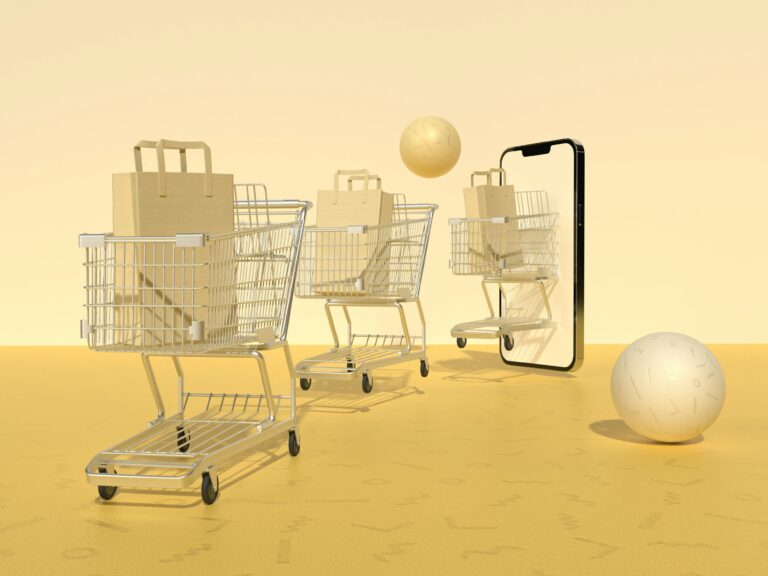From being a practical choice, e-commerce has developed into a necessary aspect of daily life. Almost anything can be ordered online these days, from personalized footwear to weekly groceries, and the trend isn’t going away anytime soon. In fact, the International Trade Administration projects that the worldwide consumer e-commerce market would grow from over $4 trillion in 2024 to nearly $6 trillion by 2027.
This rise is being driven by a wide range of product categories, such as food & beverage, home products, fashion, and more. The digital marketplace is still dominated by retail behemoths, but small enterprises are already strong competitors. Eighty percent of small firms had at least basic e-commerce capabilities by the end of 2023, according to a research by Digital Commerce 360.
However, the difficulties are growing along with the demand. Brands need to change to remain competitive in the face of rising consumer demands, supply chain disruptions, and inflation. These five major e-commerce developments will influence online sales in 2025 and beyond.
1. Video Content is Driving Sales
Videos are becoming essential on e-commerce websites as well, and they are no longer only for social media surfing. Videos help make items more tangible for consumers by bringing them to life through customer reviews, brief tips, and product tutorials.
Videos that explain how to use products, offer tips for using them and demonstrate projects that were completed using a product all earn favor with shoppers.
People’s purchasing habits are also being altered by the increase in live shopping events and social media livestreamed product releases, which add a new degree of connection and urgency. It becomes evident that video is the new sales pitch when you include short-form video material that imitates social media (think Reels, TikToks, and Stories).
2. Personalisation is the New Standard
E-commerce platforms are providing the customized, one-of-a-kind experiences that today’s customers need. Customization, whether it be choosing colors and materials, adding initials, or choosing performance characteristics, provides customers a sense of ownership that encourages repeat business.
For consumers who value purchasing goods that are exclusively their own, e-commerce offers opportunity… Custom options can contribute to the creation of a fully customized shopping experience, ranging from color selection and accessories to performance modifications.
In addition to the product itself, businesses are providing dashboards where customers can track deliveries, reschedule drop-offs, or pre-sign for packages, as well as personalized shipping notifications and customer assistance. Trust and loyalty are greatly increased by this type of end-to-end encounter.
3. Micro Purchasing Moments Are On the Rise
Do you believe that impulsive purchases are limited to in-store shopping? Rethink your thought. Micro-purchasing moments—those snap selections made on the spot—are growing more and more prevalent in the digital age.
Customers are adopting mobile devices to make quick transactions that meet their needs, whether they are ordering lunch on the run, scheduling a tour while on vacation, or purchasing tickets while reading movie reviews.
You’ll be in a better position to make those impromptu transactions if your website can offer simple product comparisons, easy checkout processes, and quick access to information.
4. Flexible Payments = More Conversions
“Credit card only” is a thing of the past. Customers anticipate having several options in 2025. Flexible payment options are now a crucial component of the e-commerce experience, ranging from bitcoin and installment plans to digital wallets and mobile pay apps.
Many contemporary ecommerce sites now accept credit or debit cards, online checks, digital wallet and mobile payment services, cryptocurrency and even installment payments via third-party providers.
In addition to making things simpler, this flexibility attracts more customers, especially those who want to split payments over time or improve their budget. Additionally, by 2029, the third-party payment market is predicted to almost treble.
5. Smarter, Simplified Shipping
Nowadays, shipping is just as crucial as the actual product. Fast, dependable, and transparent delivery is what customers want in 2025, and companies are adapting by improving their fulfillment and logistics plans.
E-commerce companies are coming up with innovative solutions to improve the post-purchase experience, such as personalized delivery dashboards and integrated tracking systems. These days, features like branded tracking, delivery rescheduling, and real-time notifications are expected rather than extras.
Wrapping Up
Staying ahead of the competition requires adjusting to the way consumers purchase now and predicting their future purchasing habits, regardless of whether you are a small business owner or an established e-commerce brand. These days, video, customization, user-friendly design, flexible payment options, and contemporary shipping options are not “extras”; they are necessities.
Are you trying to keep up with the most recent e-commerce insights? For further resources, trends, and advice to help you expand your online business in 2025 and beyond, visit https://globalnewshut.com.


